High Fat Low Carb Ketogenic Diet Plan
What is a Keto Diet?

A keto diet is well known for being a low carb diet, where the body produces ketones in the liver to be used as energy. It's referred to as many different names – ketogenic diet, low carb diet, low carb high fat (LCHF), etc.
When you eat something high in carbs, your body will produce glucose and insulin.
- Glucose is the easiest molecule for your body to convert and use as energy so that it will be chosen over any other energy source.
- Insulin is produced to process the glucose in your bloodstream by taking it around the body.
Since the glucose is being used as a primary energy, your fats are not needed and are therefore stored. Typically on a normal, higher carbohydrate diet, the body will use glucose as the main form of energy. By lowering the intake of carbs, the body is induced into a state known as ketosis.
Ketosis is a natural process the body initiates to help us survive when food intake is low. During this state, we produce ketones, which are produced from the breakdown of fats in the liver.
The end goal of a properly maintained keto diet is to force your body into this metabolic state. We don't do this through starvation of calories but starvation of carbohydrates.

Our bodies are incredibly adaptive to what you put into it – when you overload it with fats and take away carbohydrates, it will begin to burn ketones as the primary energy source. Optimal ketone levels offer many health, weight loss, physical and mental performance benefits. 1 There are scientifically-backed studies that show the advantage of a low-carb, ketogenic diet over a low-fat diet. One meta-analysis of low-carbohydrate diets showed a large advantage in weight lost. The New England Journal of Medicine study resulted in almost double the weight loss in a long-term study on ketone inducing diets.
Make keto simple and easy by checking out our 14 Day Meal Plan. Get meal plans, shopping lists, and much more with our Keto Academy Program.
Looking for Something Specific?
What Do I Eat on a Keto Diet?

To start a keto diet, you will want to plan ahead. That means having a viable diet plan ready and waiting. What you eat depends on how fast you want to get into a ketogenic state (ketosis). The more restrictive you are on your carbohydrates (less than 25g net carbs per day), the faster you will enter ketosis. Learn which foods to avoid on the keto diet.
Here's a quick video explaining what and what not to eat on a keto diet. Scroll down to see more in-depth information and a detailed list:
You want to keep your carbohydrates limited, coming mostly from vegetables, nuts, and dairy. Don't eat any refined carbohydrates such as wheat (bread, pasta, cereals), starch (potatoes, beans, legumes) or fruit. The small exceptions to this are avocado, star fruit, and berries which can be consumed in moderation.
Do Not Eat
- Grains – wheat, corn, rice, cereal, etc.
- Sugar – honey, agave, maple syrup, etc.
- Fruit – apples, bananas, oranges, etc.
- Tubers – potato, yams, etc.
Do Eat
- Meats – fish, beef, lamb, poultry, eggs, etc.
- Leafy Greens – spinach, kale, etc.
- Above ground vegetables – broccoli, cauliflower, etc.
- High Fat Dairy – hard cheeses, high fat cream, butter, etc.
- Nuts and seeds – macadamias, walnuts, sunflower seeds, etc.
- Avocado and berries – raspberries, blackberries, and other low glycemic impact berries
- Sweeteners – stevia, erythritol, monk fruit, and other low-carb sweeteners >
- Other fats – coconut oil, high-fat salad dressing, saturated fats, etc.
To see more specific advice on what (and what not) to eat, see our full keto food list >
Try to remember that keto is high in fat, moderate in protein, and very low in carbs. Your nutrient intake should be something around 70% fats, 25% protein, and 5% carbohydrate.
Typically, anywhere between 20-30g of net carbs is recommended for everyday dieting – but the lower you keep your carbohydrate intake and glucose levels, the better the overall results will be. If you're doing keto for weight loss, it's a good idea to keep track of both your total carbs and net carbs.
Protein should always be consumed as needed with fat filling in the remainder of the calories in your day.
You might be asking, "What's a net carb?" It's simple really! The net carbs are your total dietary carbohydrates, minus the total fiber. I recommend keeping total carbs below 35g and net carbs below 25g (ideally, below 20g).
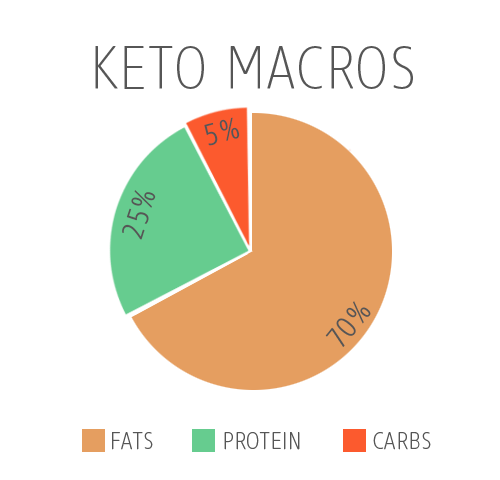
If you're finding yourself hungry throughout the day, you can snack on nuts, seeds, cheeses, or almond butter to curb your appetite (though snacking can slow progress in the long term). Sometimes we can confuse the want to snack with the need for a meal. If you're in a rush and need a keto fast food option, there are some available.
Vegetables on a Ketogenic Diet
Dark green and leafy is always the best choice for vegetables. Most of your meals should be a protein with vegetables, and an extra side of fat. Chicken thighs basted in olive oil, with broccoli and cheese. Steak topped with a knob of butter, and a side of spinach sauteed in olive oil.
If you're still confused about what a net carb is, don't worry – I'll explain further. Let's say for example you want to eat some broccoli (1 cup) – one of my favorite keto vegetables out there.
- There are a total of 6g carbohydrates in 1 cup.
- There's also 2g of fiber in 1 cup.
- So, we take the 6g (total carbs) and subtract the 2g (dietary fiber).
- This will give us our net carbs of 4g.
Here's a list of the most common low carb vegetables. Though if you want a complete list, check out our guide on the best vegetables for a ketogenic diet >
| Vegetable | Amount | Net Carbs |
| Spinach (Raw) | 1/2 Cup | 0.1 |
| Bok Choi (Raw) | 1/2 Cup | 0.2 |
| Lettuce (Romaine) | 1/2 Cup | 0.2 |
| Cauliflower (Steamed) | 1/2 Cup | 0.9 |
| Cabbage (Green Raw) | 1/2 Cup | 1.1 |
| Cauliflower (Raw) | 1/2 Cup | 1.4 |
| Broccoli (Florets) | 1/2 Cup | 2 |
| Collard Greens | 1/2 Cup | 2 |
| Kale (Steamed) | 1/2 Cup | 2.1 |
| Green Beans (Steamed) | 1/2 Cup | 2.9 |
Note: Are you a vegetarian or vegan and want to go on a ketogenic diet? It's still possible! Just keep in mind that the dietary restrictions can sometimes be a little bit intense. Make sure to plan ahead and prepare to aid your success. To help out, we've published articles (with 7-day meal plans included) for both the vegetarian ketogenic diet and the vegan ketogenic diet.
Example Recipes
Here are some examples of our newest keto recipes. Click on the recipe to see a fully detailed version with step by step photos and full nutrition breakdown:
We update the website multiple times a week with new and exciting recipes, so make sure you come back for inspiration on our library stocked with keto recipes >
If you have trouble cooking, feel free to follow along with us on our YouTube channel to see exactly how we create our recipes!
Sample Diet Plans
If you want a sample plan that has a few different ways people approach keto (light breakfast, fasting) with various recipes for breakfast, lunch, and dinner check out our 14 Day Ketogenic Diet Plan.
Your life doesn't have to revolve around the planning aspect. You can go the easy route and get detailed shopping lists and months of meal plans made for you with The Keto Academy >

Benefits of a Ketogenic Diet
There are numerous benefits that come with being on keto: from weight loss and increased energy levels to therapeutic medical applications. Most anyone can safely benefit from eating a low-carb, high-fat diet. Below, you'll find a short list of the benefits you can receive from a ketogenic diet. For a more comprehensive list, you can also read our article on the benefits of a keto diet >
Weight Loss
The ketogenic diet essentially uses your body fat as an energy source – so there are obvious weight loss benefits. On keto, your insulin (the fat-storing hormone) levels drop greatly which turns your body into a fat-burning machine.
Scientifically, the ketogenic diet has shown better results compared to low-fat and high-carb diets; even in the long term. For more information, you can read our article on keto and weight loss >
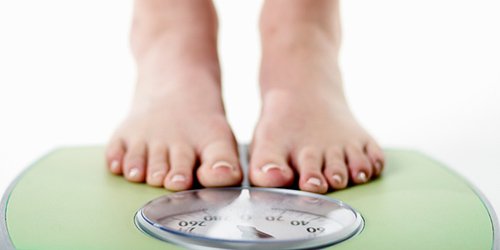
Many people incorporate MCT Oil into their diet (it increases ketone production and fat loss) by drinking ketoproof coffee in the morning.
Control Blood Sugar
Keto naturally lowers blood sugar levels due to the type of foods you eat. Studies even show that the ketogenic diet is a more effective way to manage and prevent diabetes compared to low-calorie diets.
If you're pre-diabetic or have Type II diabetes, you should seriously consider a ketogenic diet. We have many readers that have had success with their blood sugar control on keto. See more on keto and diabetes >
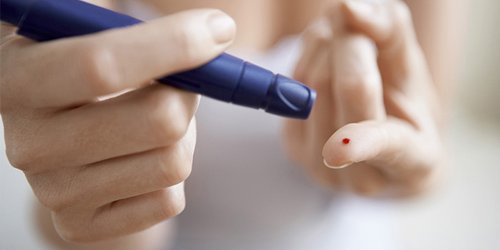
If you want to learn more, you can read about how keto can help control blood sugars >
Mental Focus
Many people use the ketogenic diet specifically for increased mental performance.
Ketones are a great source of fuel for the brain. When you lower carb intake, you avoid big spikes in blood sugar. Together, this can result in improved focus and concentration.
Studies show that an increased intake of fatty acids can have impacting benefits to our brain's function.

To learn more, see our article on the benefits of a keto diet for the brain >
Increased Energy & Normalized Hunger
By giving your body a better and more reliable energy source, you will feel more energized during the day. Fats are shown to be the most effective molecule to burn as fuel.
On top of that, fat is naturally more satisfying and ends up leaving us in a satiated ("full") state for longer. 2 A recent meta-analysis favors higher fat, lower carbohydrate diets due to the benefit they have on appetite suppression. If you're interested in the science behind it, you can read more about how keto and ketosis works >

Epilepsy
The ketogenic diet has been used since the early 1900's to treat epilepsy successfully. It is still one of the most widely used therapies for children who have uncontrolled epilepsy today. Learn more about how keto can help with epilepsy >
One of the main benefits of the ketogenic diet and epilepsy is that it allows fewer medications to be used while still offering excellent control.

In the last few years, studies have also shown significant results in adults treated with keto as well.
Cholesterol & Blood Pressure
A keto diet has shown to improve triglyceride levels and cholesterol levels most associated with arterial buildup. More specifically low-carb, high-fat diets show a dramatic increase in HDL and a decrease in LDL particle concentration compared to low-fat diets. 3 A study in the long-term effects of a ketogenic diet shows a significant reduction in cholesterol levels, body weight, and blood glucose. Read more on keto and cholesterol >
Many studies on ketogenic diets also show better improvement in blood pressure over other diets.

Some blood pressure issues are associated with excess weight, which is a bonus since keto tends to lead to weight loss. If you have high blood pressure or other blood pressure issues, click here to learn how keto can reduce blood pressure >
Insulin Resistance
Insulin resistance can lead to type II diabetes if left unmanaged. An abundant amount of research shows that a low carb, ketogenic diet can help people lower their insulin levels to healthy ranges. Read more on keto and insulin resistance >
Even if you're athletic, you can benefit from insulin optimization on keto through eating foods high in omega-3 fatty acids.

Acne
It's common to experience improvements in your skin when you switch to a keto diet.
Here's one study that shows drops in lesions and skin inflammation when switching to a low-carb diet. Another study that shows a probable connection between high-carb eating and increased acne, so it's likely that keto can help.

For acne, it may be beneficial to reduce dairy intake and follow a strict skin cleaning regimen. If you're interested in starting a ketogenic diet for your skin, consider reading our article on keto and acne >
Getting Started
Getting started is simple: just dive in! It's always good to spend some time cleaning out your kitchen pantry and adding in new staples. Check out our keto recommendations to start if you're new and not sure what to get.
We also have a free newsletter that gives some extra goodies when you sign up. Subscribe for tools to help you succeed and inspiration to keep your meals fun!
Spend some time on the site, go through different sections, and even read some keto success stories from our readers. For more tips and meal ideas, make sure to follow us on our social channels!
How to Reach Ketosis

Achieving ketosis is pretty straightforward, but it can seem complicated and confusing with all of the information out there. 4 If you want to learn more about ketosis and the scientific process around it, you can visit a very in-depth discussion about on Dr. Peter Attia's website. Here's the bottom line on what you need to do, ordered in levels of importance:
- Restrict your carbohydrates. Most people tend to only focus only on net carbs. If you want great results, limit both. Try to stay below 20g net carbs and below 35g total carbs per day. If you need extra help, we also have a small guide on finding your keto carb limit >
- Restrict your protein intake. Many people come over to keto from an Atkins diet and don't limit their protein. Too much protein can lead to lower levels of ketosis. Ideally, you want to eat between 0.6g and 0.8g protein per pound lean body mass. To help with this, consider using the keto calculator >
- Stop worrying about fat. Fat is the primary source of energy on keto – so make sure you're feeding your body enough of it. You do not lose weight on keto through starvation.
- Drink water. Try to drink a gallon of water a day. Make sure that you're hydrating and staying consistent with the amount of water you drink. It not only helps regulate many vital bodily functions, but it also helps control hunger levels.
- Stop snacking. Weight loss tends to do better when you have fewer insulin spikes during the day. Unnecessary snacking may lead to stalls or slow in progress.
- Start fasting. Fasting can be a great tool to boost ketone levels consistently throughout the day. There are many different ways to go about it, so if you're interested I suggest taking a look at our guide to keto and intermittent fasting >
- Add exercise in. It's a known fact that exercise is healthy. If you want to get the most out of your ketogenic diet, consider adding in 20-30 minutes of exercise a day. Even just a small walk can help regulate weight loss and blood sugar levels.
- Start supplementing. Although not usually needed, supplementing can help with a ketogenic diet. Learn more about optimizing with supplements >
Interested in the process of ketosis and how it affects our bodies? Feel free to read more on what ketosis is >
Note: Always remember to be vigilant and make sure you're checking ingredients on labels. It's too often that you will find hidden carbs in products that seem keto-friendly.
Optimal Ketosis and Macros
There are so many tricks, shortcuts, and gimmicks out there on achieving optimal ketosis – I'd suggest you don't bother with any of that. Optimal ketosis can be accomplished through dietary nutrition alone (aka just eating food). You shouldn't need a magic pill to do it. Just stay strict, remain vigilant, and be focused on recording what you eat (to make sure your carb and protein intake are correct).
How to Know if You're in Ketosis
You can measure if you're in ketosis via urine or blood strips, though it's not really worth it. The urine strips are considered pretty inaccurate (they more answer the question "Am I in ketosis?"), and the blood strips are expensive (up to $5 per strip). If you're interested in reading, see our guide to how to measure ketones and ketosis >
Instead, you can use this short list of physical "symptoms" that usually let you know if you're on the right track:
- Increased Urination. Keto is a natural diuretic, so you have to go to the bathroom more. Acetoacetate, a ketone body, is also excreted in urination and can lead to increased bathroom visits for beginners.
- Dry Mouth. The increased urination leads to dry mouth and increased thirst. Make sure that you're drinking plenty of water and replenishing your electrolytes (salt, potassium, magnesium).
- Bad Breath. Acetone is a ketone body that partially excretes in our breath. It can smell sharp like overripe fruit, similar to nail polish remover. It's usually temporary and goes away long term.
- Reduced Hunger & Increased Energy. Usually, after you get past the "keto flu," you'll experience a much lower hunger level and a "clear" or energized mental state.
Most people end up driving themselves crazy measuring and testing. It's much better to focus on the nutritional aspect, making sure that you're in taking proper foods and staying within your macro ranges (read below).
What Are Macros?

"Macros" is an abbreviated term of macronutrients. Your macros are your daily intake of "the big 3" nutrients: fats, protein, and carbohydrates. You can use the following calculator to see what your daily needs will be. If you want to learn more about macros and how they work in relation to keto and our bodies, click here to read more >
Starting on a ketogenic diet? Let's calculate how much you should eat. We use the information you put in to create an accurate keto nutrition profile for you.
NOTE: If you exercise or want to see a more in-depth explanation on how we are calculating the numbers, you should use the full version of the keto calculator >
-
What unit type do you prefer?
-
Height & weight
-
What is your height in centimeters?
-
What is your current weight in kilograms?
-
What is your height in feet?
-
What is your current weight in pounds?
-
-
Your age
What is your current age?
-
Body fat percentage
What is your body fat percentage?
BMI and body fat are two different measurements. If you don't have calipers or a DEXA machine, use our guide to visually estimate body fat percentage.
What is your body fat percentage?
-
ACTIVITY LEVEL
How active are you on a daily basis?
-
Sedentary
Not much activity with little to no exercise. Typically a desk job.
-
Lightly Active
Daytime walking with less than 20 minutes exercise per day. Usually light strolls after meals.
-
Moderately Active
A lightly active day job with physical labor or scheduled exercise (i.e. riding your bike to work or lifting a few times a week).
-
Very Active
A very active day job (i.e. construction or industrial worker) or intense amount of exercise every day.
-
-
DEFICIT / SURPLUS
What are your end goals of a ketogenic diet?
-
Lose Weight
-
Maintain
-
Gain Muscle
How much of a deficit do you want?
%
It's recommended to never go above a 30% calorie deficit. It's also recommended that you never go above a 15% calorie surplus. If you do, negative results may happen.
-
-
CARBS & PROTEIN
How many carbs do you want to consume?
It is highly recommended that on a ketogenic diet, you keep your carb intake to 5% or less of total calories. This works out to be an average of 20g net carbs a day.
Net carbs.
How much protein do you want to consume?
Protein shouldn't be over-consumed on a ketogenic diet. If too much is eaten, it could lead to slower weight loss and smaller levels on ketones in the blood.
-
If you're sedentary, we suggest between 0.6g and 0.8g protein.
-
If you're active, we suggest between 0.8g and 1.0g protein.
-
If you lift weights, we suggest between 1.0g and 1.2g protein.
g.
Calculate
-
-
Your macros
How much should you be eating per day?
-
0 calories
-
0 g fats
-
0 g carbs
-
0 g protein
Based on your inputs, we suggest you eat: 0 calories. From those, 0g fats, 0g net carbs, and 0g protein
-
For ideas and inspiration on how to reach your macros, take a look at our ever-growing library of keto recipes. If you don't want to do all of the planning yourself, consider getting detailed shopping lists and months of meal plans made for you with our Keto Academy.
Types of Ketogenic Diets

NOTE: If your end goal for keto is not to build muscle, you can skip this section.
Many people ask if carbs are needed to build muscle. Of course, they're not. If you're asking this question, I will assume you know how you gain mass.
Your glycogen stores can still be refilled while on a ketogenic diet. A keto diet is an excellent way to build muscle, but protein intake is crucial here. It's suggested that if you are looking to gain mass, you should be taking in about 1.0 – 1.2g protein per lean pound of body mass. Putting muscle on may be slower on a ketogenic diet, but that's because your total body fat is not increasing as much. 5 Note that at the beginning of a ketogenic diet, both endurance athletes and obese individuals see a reduced physical performance for the first week of transition.
If for some reason you need to put on body fat also, you can achieve your goals through different types of a Ketogenic Diet. These are:
- Standard Ketogenic Diet (SKD): This is the classic keto diet that everyone knows and does. It's the "bread and butter" of this website.
- Targeted Ketogenic Diet (TKD): This is a variation where you eat SKD, but intake a small amount of fast-digesting carbs before a workout.
- Cyclical Ketogenic Diet (CKD): This is a variation of keto for bodybuilders and contest goers, generally giving one day a week to carb up and resupply glycogen stores.
If you work out intensely, then a TKD or CKD may be for you. To learn more about training on keto, check out our comprehensive guide to bodybuilding on a ketogenic diet >
Physical Performance
People often argue that performance is affected when on a keto diet, but that's not true. Well, not in the long run. In the short-term, you may notice some small physical performance drops, but this will subside as you continue replenishing fluids, electrolytes, and adapt to the fat intake.
Many studies have been done on exercise. A study was done on trained cyclists who were on a ketogenic diet for four weeks. The results show that aerobic endurance was not compromised at all, and their muscle mass was the same as when they started.
Their bodies adapted through ketosis, limiting both glucose and glycogen stores, and used fats as the predominant energy source.
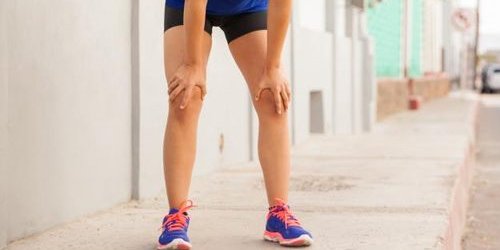
There was another study done on eight professional gymnasts who had the same results. Both groups were fed a strict diet of green vegetables, proteins, and high-quality fats. So, even if you are doing long bouts of cardio – a keto diet has been proven time and time again.
The only real time where ketosis can give performance loss is in exercises that need an explosive action. If you need a little boost in your performance during these, you can "carb-up" by eating 25-50g of carbs about 30 minutes before you train.
If you're looking to train intensely on a ketogenic diet and want to learn more about the basics, see our guide to training on a keto diet >
Dangers of a Keto Diet

Can ketone production in the body get too high? Yes, it's called ketoacidosis. Is it likely under normal circumstances? Not at all. For most people, it's a challenge just to get into optimal ranges for ketosis. Getting into territory where you need medical intervention is just not likely.
NOTE: The main exception to ketoacidosis is type 1 diabetics – it can happen when insulin levels are severely low which is rare in someone with a normally functioning pancreas. Dangerously high ketone levels result in insulin secretion.
There are a lot of misconceptions about low carb dieting which has caused an infamous outlook on keto. There have been tons of studies published over the last 30 years that show how high amounts of fat and few carbs are beneficial.
People sometimes get keto confused with high fat, high carb diets which are terrible for the body. Of course, when you eat a lot of fatty foods that are high in sugar, you'll be getting yourself into trouble.
Have you been thinking of going on a low-fat diet? It's been shown that a ketogenic diet is both healthier and more effective than low-fat dieting.
When you eat foods high in carbohydrates and fat, your body naturally produces glucose. Carbohydrates are the easiest thing for the body to process, and therefore it will use them first – resulting in the excess fats to be stored immediately. In turn, this causes weight gain and health problems that are associated with high fat, high carbohydrate diets (NOT a keto diet).
As a precaution, you should always check with your physician if you have any concerns about starting a keto diet. You should especially be wary if you're currently taking medications for a pre-existing condition as extra monitoring may be needed. Be careful when breastfeeding as you may need to increase carb intake.
What Happens To My Body
Your body is used to the simple routine of breaking down carbohydrates and using them as energy. Over time the body has built up an arsenal of enzymes ready for this process and only has a few enzymes for dealing with fats – mostly to store them.
All of a sudden your body has to deal with the lack of glucose and increase in fats, which means building up a new supply of enzymes. As your body becomes induced into a ketogenic state, your body will naturally use what's left of your glucose.
This means your body will be depleted of glycogen in the muscles – which can cause a lack of energy and general lethargy.

In the first week, many people report headaches, mental fogginess, dizziness, and aggravation. Most of the time, this is the result of your electrolytes being flushed out, as ketosis has a diuretic effect. Make sure you drink plenty of water and keep your sodium intake up. 6 One of the fathers of keto, Dr. Phinney, shows that electrolyte levels (especially sodium) can become unbalanced with low carb intake.
In fact, you should go overboard with the salt – salt everything! Sodium will help with water retention and help replenish the electrolytes. For most, this temporary groggy feeling is the biggest danger you're going to face. It's called the "Keto Flu."
Keto Flu

Keto flu is a very common experience for people new to a ketogenic diet, but it often goes away after just a few days – and there are ways to minimize or even eliminate it. When transitioning to keto, you may feel some slight discomfort including fatigue, headache, nausea, cramps, etc.
There are a few reasons for the keto flu, but the two primary ones are:
- The keto diet is a diuretic. You tend to go to the bathroom more to urinate, which attributes to a loss of both electrolytes and water in your body. You can usually help combat this by either drinking bouillon cube or Powerade Zero and by increasing your water intake. Mainly, you want to replenish your depleted electrolytes.
- You're transitioning. Your body is equipped to process a high intake of carbs and a lower intake of fat. Your body needs to create enzymes to be able to do this. In the transitional period, the brain may run low on energy which can lead to grogginess, nausea, and headaches. If you're having a large problem with this, you can choose to reduce carb intake gradually.
After increasing water intake and replacing electrolytes, it should relieve most all symptoms of Keto Flu. For an average person that is starting a ketogenic diet, eating 20-30g of net carbs a day, the entire adaptation process will take about 4-5 days. My advice is to cut your carbs to fewer than 15g to ensure that you are well on your way into ketosis within one week. If you are experiencing any more keto flu symptoms, double check your electrolyte intake and adjust.
You may notice that if you're an avid gym-goer, you lost some strength and endurance. A temporary decrease in physical performance is typical. Once your body becomes keto-adapted, your body will be able to fully utilize fat as its primary source of energy.
If you're new to keto and seem to be having an issue with the common side effects, read our guide on the keto flu and how to remedy it >
Common Side Effects on a Keto Diet
Here are a few of the most common side effects that I come across when people first start keto. Frequently the issues relate to dehydration or lack of micronutrients (vitamins) in the body. Make sure that you're drinking enough water (close to a gallon a day) and eating foods with good sources of micronutrients. If you want to read more on this, see our guide on micronutrients >
For an overview of this section and a more in-depth guide, you can read more on how to remedy different side effects of the ketogenic diet >
Cramps
Cramps (and more specifically leg cramps) are a pretty common thing when starting a ketogenic diet. It's usually occurring in the morning or at night, but it's a pretty minor issue overall. It's a sign that there's a lack of minerals, specifically magnesium, in the body.
Make sure to drink plenty of fluid and eat salt on your food. Doing so can help reduce the loss of magnesium and get rid of the issue.

If the problem persists, try supplementing with a magnesium supplement >
Constipation
The most common cause of constipation is dehydration. A simple solution is to increase water intake and try to get as close to a gallon a day as possible.
Making sure vegetables have some fiber in will also usually help. Getting in some good quality fiber from non-starchy vegetables can solve this problem. Though if that's not enough, usually psyllium husk powder will work or taking a probiotic.
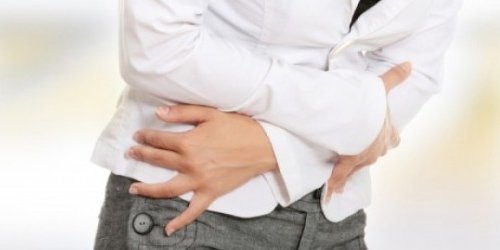
Heart Palpitations
When transitioning to keto, you may notice that your heart is beating both faster and harder. It's pretty standard, so don't worry about it.
If the problem persists, make sure that you're drinking plenty of fluid and eating enough salt. Typically this is sufficient to get rid of the problem right away. Though if the issue persists, it may be worth taking a potassium supplement once a day.
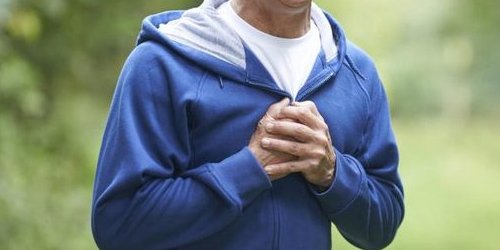
Reduced Physical Performance
You may see some limitations on your performance when you first begin a keto diet, but it's usually just from your body adapting to using fat. As your body shifts in using fat for energy, all of your strength and endurance will return to normal.
If you still notice problems with performance, you may see benefits from intaking carbs prior to your workout (or cycling carbs). Click here to read more >

Less Common Side Effects on a Keto Diet
These are some of the lesser common problems that I am e-mailed about on a semi-consistent basis. Many of these problems also relate to hydration and micronutrients, so make sure that you are drinking plenty of water and replenishing electrolytes.
Breastfeeding
There are mixed and matched studies on keto and breastfeeding, though nothing is well researched at the current moment. Right now it's understood that ketogenic diets are typically healthy to do while breastfeeding.
It's suggested to add in 30-50g extra carbs from fruit when breastfeeding to help the body produce milk. You may also have to add in extra calories.

Specifically, 300-500 calories worth of extra fat to help with milk production. You should always contact medical professionals for advice.
Hair Loss
If you're experiencing hair loss within five months of starting a ketogenic diet, it's most likely temporary. You can take a multivitamin and do what you normally do.
Though hair loss is very uncommon on keto, you can minimize it by making sure you're not restricting calories too far and making sure you get 8 hours of sleep a night.
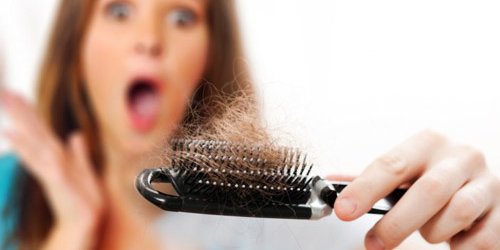
Increased Cholesterol
Usually, it's a good thing! Many studies point toward cholesterol elevation when doing a low-carb, ketogenic diet.
Higher cholesterol is generally due to HDL (the good cholesterol) increasing – lowering your chance of heart disease. You may see increased triglyceride counts, but that's very common in people losing weight. These increases will subside as your weight normalizes.
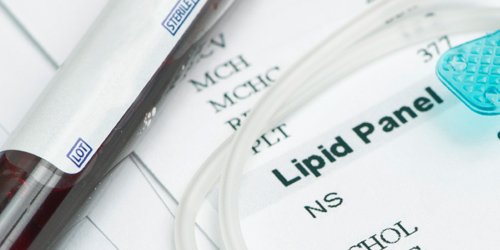
There's a small percent of people that experience raised LDL cholesterol as well. These elevated levels are usually fine – though harder to test. The dangers of LDL cholesterol come from size and density, which are shown to be very healthy on keto. Read more on keto and cholesterol >
Gallstones
Of the few studies done on keto and gallstones, most people have either improved or cured gallstone problems. The only downside is that many reported an increase in discomfort when starting out on low-carb. If you stick with it, you should notice a vast improvement.
Another common question relating to gallstones is "Can I start keto if I have had my gallbladder removed?" The answer is yes.

You may want to increase your fat gradually to allow your system some time to get used to it.
Indigestion
Generally speaking, switching to keto gets rid of indigestion and heartburn. Keep in mind that some people see increased attacks when they're first starting out.
If you're experiencing problems, it may be best to limit the amount of fat you intake; gradually increasing the amount you have per day over a two-week period.

Keto Rash
There's no real scientific reasoning/explanation behind why some people start to itch when they start keto. There's just a handful of experiences that people have written about, and so I'm basing my answer on what I've read.
From anecdotes, it's most likely irritation from the acetone that is excreted in sweat (it's why you may experience bad breath).

It's worth looking into better clothing options for absorbing or wicking sweat from your body. It's also worth showering right after an activity that causes you to sweat.
If it's a lasting issue that is causing problems, you may want to consider upping your carbs or changing exercise plans.
Troubleshooting Further
Sometimes there's issues or problems that aren't covered in this guide. There are many other articles on the site, so make sure to search. If you're having trouble with a specific question, we have a very helpful facebook group too!
You'll find some common questions that we come across when people start out below. At the bottom of the section, there's a link to an in-depth FAQ as well.
Q: How much weight will I lose?
A: The amount of weight you lose is entirely dependent on you. Obviously adding exercise to your regimen will speed up your weight loss. Cutting out things that are common "stall" causes is also a good thing. Artificial sweeteners, dairy, wheat products and by-products (wheat gluten, wheat flours, and anything with an identifiable wheat product in it).
Loss in water weight is common when you first start a low carb diet. Ketosis has a diuretic effect which can cause a significant amount of weight dropped in only a few days. While I hate being the bearer of bad news, this isn't fat. But on a side (and more positive) note, that shows that your body is starting to adjust itself into a fat-burning machine!
There's a huge list of keto-friendly recipes for you to choose from, go check them out! See our growing list of keto recipes >
Q: How should I track my carb intake?
A: The most common ways to track your carbs is through MyFitnessPal and their mobile app. You cannot track net carbs on the app, although you can track your total carb intake and your total fiber intake. To get your net carbs, just subtract your total fiber intake from your total carb intake. I have written an article on how to track carbs easily on keto >
Others choose to use FatSecret, which is an app I am unfamiliar with, although I do know that you can track your net carbs. The choice is entirely up to you and up to your free will to decide.
Q: I cheated and want to get back on keto. How do I do that?
A: First take a breath, it's not the end of the world. You may find that your weight goes up temporarily as your body retains water. You may also find that the scale goes down pretty quickly when you lose that water. If you see the scale fluctuating, please keep in mind that there's a biological reason for it.
Pick yourself up, get back on track, and stay strict to keep cravings down. If you're having trouble with the planning aspect, you may want to consider looking into our Keto Academy Program.
Q: I'm not losing any more weight. Now what?
A: Many things can cause a slow down in weight loss: stress, lack of sleep, exercise, hormonal changes, and alcohol use among other things are factors. Weight loss will not always be a linear process, either. We have fluctuations in water that happens every day.
On average people will lose 1-2 lbs. a week, but that doesn't mean the scale will drop consistently. Take measurements as well as tracking your weight via scale, as often there can be changes in size but no change on the scale. If you're still experiencing problems after 4-5 weeks, start looking into your dietary choices.
The first thing people typically recommend is re-tracking your macros to make sure you've been on track, making sure you're drinking enough water and supplementing electrolytes, and finally reducing the amount of dairy being used. You can also read more about overcoming a keto weight loss plateau >
Q: I don't like meat/eggs/dairy/[insert disliked food], can I still do a ketogenic diet?
A: The short answer is yes. Aside from the broad guidelines stated above, there are no real "rules" so long as you're low carb, moderate protein and getting the rest of your calories from fat. If it fits within your macros, then you're fine.
Some drink coffee with butter (recipe here) and eat plenty of meat; some do vegetarian recipes, some are dairy and nut-free. There are lots of options out there to suit any dietary restrictions.
Q: What happens after you reach your goal weight on keto?
A: Some people want to go off keto once they've reached their goal weight, others choose to stay on keto or take up a clean-eating diet. I've been on keto for almost a decade now. One thing to always remember – if you go back to your old habits you will put the weight back on.
If you keep your intake in check, you may still notice an increase in weight because of glycogen stores refilling. Many people find they stick to keto or a low-carb diet simply because it makes them feel better.
You can read more common keto questions on our frequently asked keto questions >
Saving Money and Budgeting

A common misconception is that the ketogenic diet is more expensive than other diets out there. And, while it may be a little bit more expensive than buying grain-stuffed foods, it's much cheaper than many people think. To get an idea, I've broken down the costs of some of our most favorite recipes that you can read here >
A ketogenic diet may be more expensive than a standard American diet, but it's no different than other clean eating lifestyles. That said, there's still numerous ways to save money while cooking keto. The best ways to save money is the same as with any other budgeting:
- Search for deals. There's always a sale or a coupon to be found for keto-friendly items out there. Typically you can find significant savings in magazines and newspapers that are sent to your house, but they can also be combined with in-store specials and manager cuts. When combined, you can save a significant amount of your keto groceries.
- Bulk buy and cook. If you're someone who doesn't like to spend a lot of time in the kitchen, this is the best of both worlds. Buying your food at bulk (specifically from wholesalers) can reduce the cost per pound tremendously. Plus, you can make ahead food (bulk cook chicken thighs for pre-made meat, or cook entire meals) that are used as leftovers, so you spend less time cooking.
- Make things yourself. While it's extremely convenient to buy most things pre-made or pre-cooked, it always adds to the price per pound on items. Try prepping veggies ahead of time instead of buying pre-cut ones. Try making your stew meat from a chuck roast. Or, simply try to make your mayo and salad dressings at home. The simplest of things can work to cut down on your overall grocery shopping.
You can read more advice on how to save money on eating keto on a budget >
Takeaways and Advice
Overall, eating a high amount of fat, moderate protein, and a low amount of carbs can have a massive impact on your health – lowering your cholesterol, body weight, blood sugar, and raising your energy and mood levels.
A ketogenic diet can be hard to fathom in the beginning but isn't as hard as it's made out to be. The transition can be a little bit tough, but the growing popularity of the clean eating movement makes it easier and easier to find available low-carb foods.
After reading this page in its entirety, my best cut and dry advice for someone starting off and wanting to lose weight are listed below:
- Keep it straightforward and strict. You usually see better results in people who restrict their carb intake further. Try to keep your carbs as low as possible for the first month of keto. Keep it strict by cutting out excess sweets and artificial sweeteners altogether (like diet soda). Cutting these out dramatically decreases sugar cravings.
- Drink water and supplement electrolytes. The most common problems come from dehydration or lack of electrolytes. When you start keto (and even in the long run), make sure that you drink plenty of water, salt your foods, and take a multivitamin. If you're still experiencing issues, you can order electrolyte supplements individually.
- Track what you eat. It's so easy to over-consume on carbs when they're hidden in just about everything you pick up. Keeping track of what you eat helps control your carb intake and keep yourself accountable.
If you're still not sure where to start or you want to learn a little bit more about me and the website, I'd highly recommend reading through my "Start Here" page.
High Fat Low Carb Ketogenic Diet Plan
Source: https://www.ruled.me/guide-keto-diet/

0 komentar:
Posting Komentar